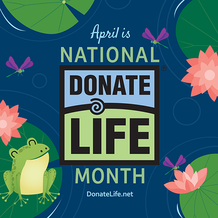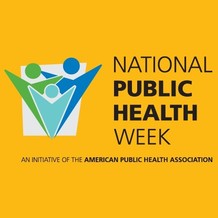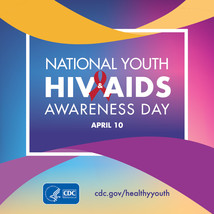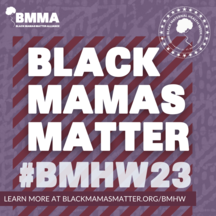
April is National Minority Health Month, and the HHS Office of Minority Health (OMH) is focused on improving health outcomes for racial and ethnic minority and American Indian/Alaska Native communities by providing them with culturally and linguistically competent healthcare services, information, and resources through this year’s theme, Better Health Through Better Understanding.
It is estimated that only 14 percent of the U.S. population has proficient health literacy, which is an individual’s ability to find, understand, and use information and services to inform health-related decisions and actions for themselves and others. Nearly 20 percent of people in the U.S. speak a language other than English at home. When patients are provided with culturally and linguistically appropriate information, they are empowered to create healthier outcomes for themselves and their communities.
Visit our National Minority Health Month website in English and Spanish to find resources, social media messages, graphics, and information on Better Health Through Better Understanding!
|

Observed every April, National Donate Life Month helps raise awareness about donation, encourages Americans to register as organ, eye, and tissue donors, and honors those that have saved lives through the gift of donation.
More than 100,000 people are waiting for a lifesaving transplant and every 9 minutes another person in the U.S. is added to the national transplant waiting list.
Transplants rely on the generosity of organ, eye, and tissue donors, and there are not enough donors to meet the need. You can help by registering as a donor at organdonor.gov and donaciondeorganos.gov.
Visit donatelife.net for graphics, downloadable materials, and more information on how you can help honor donors, recipients, and their families and caregivers.
|

April 3-9 is National Public Health Week (NPHW) led by the American Public Health Association. This year's theme, Centering and Celebrating Cultures in Health, aims to highlight and recognize the way our communities and their diverse cultures have demonstrated resiliency and continue to influence our hard work to make America a healthier, more equitable, and just nation.
Here are some ways to get involved during NPHW:
- Check out and share these fact sheets during the NPHW daily themes and see how we can build a healthier nation. Each fact sheet is available in English and Spanish.
- Sign up for the Keep It Moving Challenge.
- Join the NPHW Twitter Chat on April 5 at 2:00 p.m. ET using the hashtag #NPHWchat.
Visit the NPHW website to find more information, resources, upcoming events, and a bilingual toolkit.
|

National Youth HIV & AIDS Awareness Day (NYHAAD) is observed each year on April 10 to educate the public about the impact of HIV and AIDS on young people.
According to the Centers for Disease Control and Prevention (CDC), 1 in 5 of all new HIV diagnoses occur in young people ages 13-24 and around 44 percent of young people with HIV do not know they have the virus.
Youth can better understand their risk and know how to protect themselves against HIV by following these recommended steps:
-
Get educated. Learn the basic facts about HIV transmission, testing, and prevention.
-
Get talking. Talk with parents, families, teachers, doctors, and other trusted adults about HIV and sexual health.
-
Get tested for HIV. CDC recommends that everyone between the ages of 13 and 64 get tested for HIV at least once as part of routine health care.
-
Get medicine. If you test positive for HIV, get support, seek treatment, and stay in care to remain healthy and prevent passing the virus to others.
For more information about HIV/AIDS prevention and treatments, testing services, and care campaigns for young people, visit the CDC NYHAAD webpage.
|

Black Maternal Health Week (BMHW), held on April 11-27, is a week-long campaign led by the Black Mamas Matter Alliance to build awareness, activism, and community-building to amplify the voices, perspectives, and lived experiences of Black Mamas and birthing people.
This year’s theme, Our Bodies Belong to Us: Restoring Black Autonomy and Joy, speaks to women’s strength, power, and resilience, and their unassailable right to live freely, safely, and joyfully.
According to the CDC, in 2020 the maternal mortality rate for Black women was 3 times higher than white women in the U.S. Multiple factors contribute to these disparities, such as lower quality healthcare, structural racism, implicit bias from healthcare providers, and underlying chronic conditions.
Improving maternal health and reducing the disparities in maternal health outcomes is a top priority for the Biden-Harris Administration. In 2022, a dozen federal agencies mobilized to develop and release the White House Blueprint for Addressing the Maternal Health Crisis. This Blueprint outlines specific actions that the federal government is taking to improve maternal health across five priorities, ranging from increasing access to and coverage of high-quality maternal health services to expanding and diversifying the perinatal workforce.
To support the week-long observance, join the BMHW Twitter Chat on April 11 at 12:00 p.m. ET using the hashtag #BMHW23, and download the 2023 Social Media Toolkit for key messaging, events, shareable social media messages, graphics, and other materials.
|

In observance of National Minority Health Month, the OMH Knowledge Center recommends reviewing health literacy resources provided by the Public Library Association. We are also highlighting a collection of resources on health literacy, including journal articles, reports, consumer health toolkits, and more.
This collection is available for free through the online catalog.
Looking for more information on a topic included in this collection? View our search tips page for guidance on searching the online catalog.
|
|